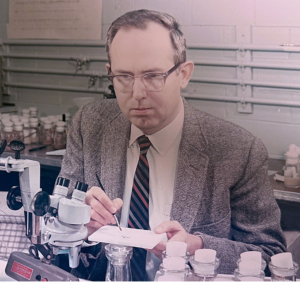For a gene to get to work, it needs to get a little push and be told what to do. A cell first needs to read all of the important genetic information coded into a gene to determine its function, then it will produce the proper amount of RNA molecules needed to get the job done. This task of making sure genes are turned “on” at the right level and performing their functions is what much of the cell’s energy is devoted to. No pressure or anything.
While this process is carefully regulated in our bodies, researchers have long wondered how this particular and complex process came to be at all. How have these patterns developed and changed across generations? Understanding this process can help researchers find new and unique insights for organisms- such as how they adapt to their surroundings or why they have different traits compared to other organisms.
Researchers from the Georgia Institute of Technology’s School of Biological Sciences found some answers to the mystery of gene regulation by turning to the trusty roundworm C. elegans, a frequently studied model organism that has contributed to many important discoveries. In their new study, these researchers used a powerful new approach to compare gene activity across several types of wildly diverse worm strains from all over the world to uncover their regulatory structure.
In this first of its kind study, the researchers crossed each strain of worm with their standard N2 lab strain to make a hybrid offspring. They then used a modern and powerful technique called allele-specific RNA sequencing to determine how the genes were being used in these new strains, and which parent DNA is driving the gene’s activity. There are two important ways gene activity can be controlled these researchers analyzed: via cis effects (when a gene is affected by nearby changes in its own DNA) and via trans effects (if the activity is being influenced by something elsewhere in the genome, like a protein from another gene). To break it down even more, think of a cis effect as if a musician is playing from sheet music, and only plays differently if the notes are changed. For a trans effect, the musician may be playing the same sheet music, but the conductor at the podium is controlling how slowly or loudly the music is being played.
This study shows that many genes had both cis and trans effects on their genes, but they often cancel each other out and actually keep the gene expression fairly stable. This balancing act is called compensatory regulation, and the researchers found this to be surprisingly common in the worms.
Another fascinating finding was that even when the different strains of C. elegans share the same version of a gene, they don’t always use it in the same way. It turns out that gene regulation is usually strain-specific, with strains using their own gene-regulating “style.” This suggests that perhaps evolutionary histories and genetic backgrounds can shape a unique way for bodies to regulate genes, which influences how an organism’s traits emerge and evolve. The researchers also found that genes that shared the same type of regulation (were turned on or off in similar scenarios) shared many other characteristics, which suggested that genes with particularly important functions were more likely to have similar levels of RNA expression despite genetic diversity.
By zooming in on the patterns and variations of gene expression in roundworms, these researchers have found rules for how genetic diversity alters the DNA sequence and rewires the regulatory systems that control gene activity- meaning that this diversity can change what genes exist and how these genes behave. Even small genetic differences (even smaller than the tiny roundworm itself) can lead to big changes in how genes are regulated, both through cis and trans effects.
References
The regulatory architecture of gene expression variation in Caenorhabditis elegans revealed by multi-strain allele-specific analysis
Avery Davis Bell, Francisco Valencia, Annalise B Paaby
GENETICS. July 2025.































